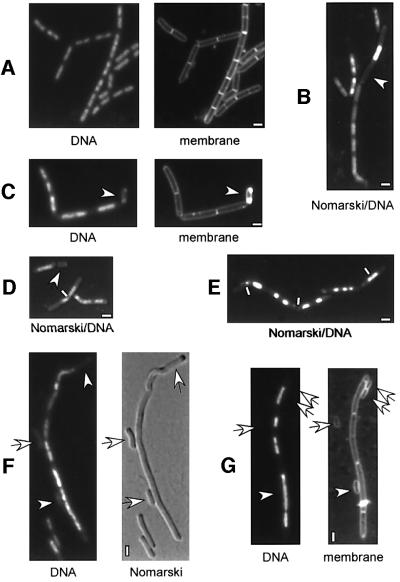Fig. 1. Deletion of scpA and scpB leads to abnormal, decondensed nucleoid structure and formation of anucleate cells. Fluorescence microscopy of exponentially growing cells from strains (A) PY79 (wild type), (B) JM11 (scpA::tet), (C) PG32 (scpB::tet), (D) JM12 (scpA-B::tet), (E) PG37 (scpA::tet, spoIIIE::spec), (F) PG43 (scpB::tet, pspac-smc at amy locus, smc::kan) growing in the absence of IPTG (inducer) and (G) PG39 (scpB::tet, spo0J::spec). DNA was stained with DAPI, membranes with FM4-64 and outlines of cells by Nomarski digital interference contrast (DIC). Arrows indicate anucleate cells and white lines show chromosomes dissected (‘guilloutined’) by prematurely formed septa. (B), (D) and (E) are direct captures of DAPI fluorescence and Nomarski DIC. White rectangles indicate 2 µm.

An official website of the United States government
Here's how you know
Official websites use .gov
A
.gov website belongs to an official
government organization in the United States.
Secure .gov websites use HTTPS
A lock (
) or https:// means you've safely
connected to the .gov website. Share sensitive
information only on official, secure websites.
